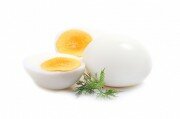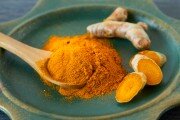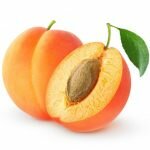Revisiting The Health Benefits Of Black Seed Oil
Thanks to feedback from our readers and comments left on our website, I’ve been introduced to numerous healing powers of black seed oil.
Black seed (nigella sativa, also known as black cumin) has been traditionally used by various ancient cultures throughout the world as a remedy for several diseases and ailments, and to help improve and maintain general health.
The oil of immortality
The healing properties of black seed oil were believed to be so powerful that ancient Egyptians described it as a panacea and Pharaoh Tutankhamun (1334-1325BC) even had a bottle of the oil in his tomb. Avicenna (980-1037AD) the Persian-born Islamic philosopher and doctor who wrote the great medical treatise The Canon of Medicine, a standard medieval medical text, referred to the black seed as the seed that stimulates the body’s energy and helps recovery from fatigue.
More recently, The Sunday Times columnist, Susan Clark wrote: “I was impressed by this herb (black seed) because, when I was given it to get rid of an intense migraine, it quickly cleared both my congested head and my congested sinuses.”
The truth is the medicinal uses of black seed oil – pressed from the seeds of the black seed plant – range from prostate protection to controlling allergic reactions and fungal infections to cosmetic use for healthy hair and skin.
An assessment of four studies including a total of 152 patients with allergic diseases (allergic rhinitis, bronchial asthma, atopic eczema) were treated with black seed oil, given in capsules at a dose of 40-80 mg/kg daily.
The results showed that black seed oil could prove to be an effective ingredient to enhance mainstream treatment of allergic diseases.
Other research has shown that black seed oil acts as a potent free radical scavenger. Reducing the impact of destructive free radicals such as superoxide can help reduce the damage to cell membranes, particularly nerve cells within the brain.
Then there is its ability to put a lid on those embarrassing fungal infections. Fungus infections are quite common, including Athlete’s foot, nail infections, ringworm and thrush. Now, black seed may offer you an alternative to the anti-fungal medications and the potential side-effects they can bring like skin irritation.
In one study, the antifungal activities of extracts of black seed were tested against eight species of dermatophytes, otherwise known as skin fungus.
The results revealed the potential for black seed oil to be used as an alternative to anti-dermatophyte drugs. It also supports its use in folk medicine for the treatment of fungal skin infections. Another Turkish study also highlighted the antibacterial and antifungal qualities of black seed oil.
Black seed oil has a long tradition in the area of beauty care. Texts from the ancient Orient and from 1st century Europe, as recorded by Pliny, report extensive traditional use for black seed oil in hair and skin care.
Taking black seed oil internally appears to contribute to healthy hair by regulating various bodily functions. Culpeppers Complete Herbal (17th century) recommends massaging black seed oil into the scalp before washing to maximize hair care and prevent hair loss.
Try taking one tsp (5ml) of black seed oil per day for internal use. It can be mixed into foods or taken from the spoon. Do not heat as this may cause deterioration of the nutritional properties. Higher levels can be used under the guidance of a doctor schooled in alternative medicine. Black seed oil may also be used topically in daily skin and hair care routine, as a therapeutic massage oil, and/or as a chest rub for respiratory support.
Did you find this information useful?
Then why not get more expert health recommendations just like this delivered direct to your inbox?
"It is truly refreshing to read a newsletter on the topic of alternative medicine which is scientifically based and reviewed by professionals..." - Robert Sinott
We respect your privacy and will never share your details with anyone else.Disclaimer: Bear in mind the material contained in this article is provided for information purposes only. We are not addressing anyone’s personal situation. Please consult with your own physician before acting on any recommendations contained herein.
Sources:
Susan Clark, What’s the Alternative? The Sunday Times newspaper, Oct 09, 2005
Phytother Res 2003;17(10):1209-14
Nahrung 2002;46(4):240-4
Lancet 1995;345(8964):1529-32
Phytother Res 2000;14(5):323-8
J Ethnopharmacol 2005;101(1-3):116-9
Phytother Res 2003;17(4):299-305
- Comments (0)
- Facebook Comments (0)










